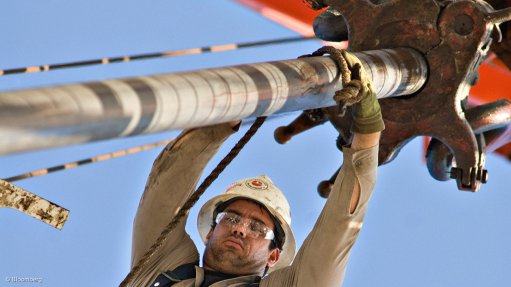
Photo by: Bloomberg
PERTH (miningweekly.com) – The Australian Petroleum Production and Exploration Association (Appea) has welcomed Western Australia’s Environmental Protection Authority’s (EPA’s) new assessment guidelines for hydraulic fracturing, saying they supported the state’s existing regulatory regime.
The EPA on Wednesday released a bulletin defining the circumstances under which the EPA would assess the proposal for a potential fracking operation, and also set out the EPA’s expectations on the information required to conduct a thorough environmental impact assessment.
EPA chairperson Paul Vogel said while this would not replace scoping for individual proposals, the EPA believed it was important to provide early advice to proponents considering larger scale proposals.
“There is great interest in the community about the potential environmental impacts and risks of hydraulic fracturing, the regulation of this activity and the knowledge-base of the hydrogeology of the target area,” Vogel said.
“It is essential that in preparing for the potential future referral of a larger-scale trial or full production-scale proposal, that the studies undertaken and information provided to the EPA are robust and sufficiently comprehensive to enable a thorough assessment of the environmental impacts and risks.”
Vogel said the bulletin only addressed hydraulic fracturing for shale and tight gas, adding that the EPA would develop further guidance if hydraulic fracturing for coal seam gas was likely to be considered in Western Australia.
Appea’s COO for the Western Region, Stedman Ellis, pointed out that the EPA had previously determined that current exploration activities involving hydraulic fracturing were unlikely to have a significant environmental impact.
“The EPA has now outlined a pragmatic and responsible approach to the approval of more advanced projects based on a comprehensive and scientifically-based assessment of risk,” he said.
“In doing so, it has clearly rejected the alarmist view that shale and tight gas projects cannot be developed safely.
“Instead, the EPA has effectively said that new proposals should be considered on their merits and, if approved, be required to operate in accordance with strict regulations.”
Ellis said the new assessment guidelines provided certainty for companies by making it clear what information would be required by the EPA when considering new projects.
He added that while the level of information required was extensive, industry recognised that the EPA was responding to community concerns.
“The EPA has reiterated its view that some hydraulic fracturing proposals will not require a formal assessment because the effect on the environment is unlikely to be significant,” he said.
“This has been the approach taken in regard to exploration wells currently planned for the Perth and Canning basins.
“The community can be confident, however, that any proposal that is subject to a formal impact assessment in the future will have been through an extremely comprehensive and rigorous process,” he said.